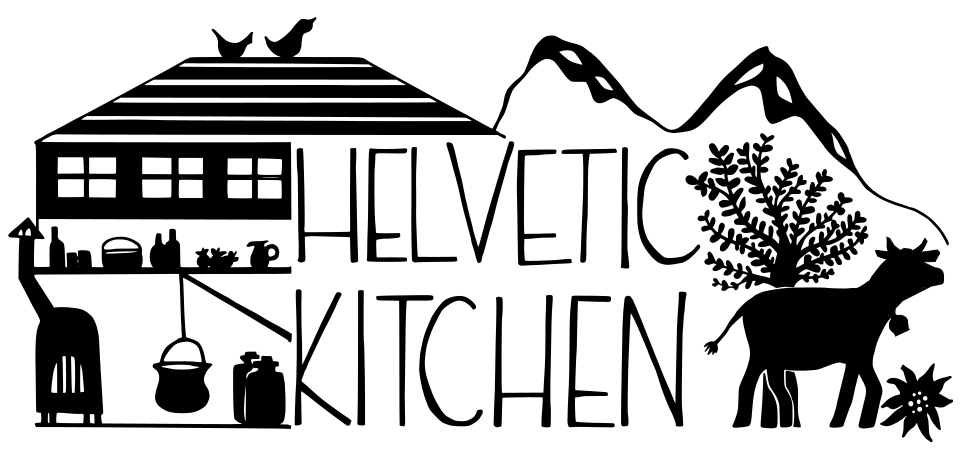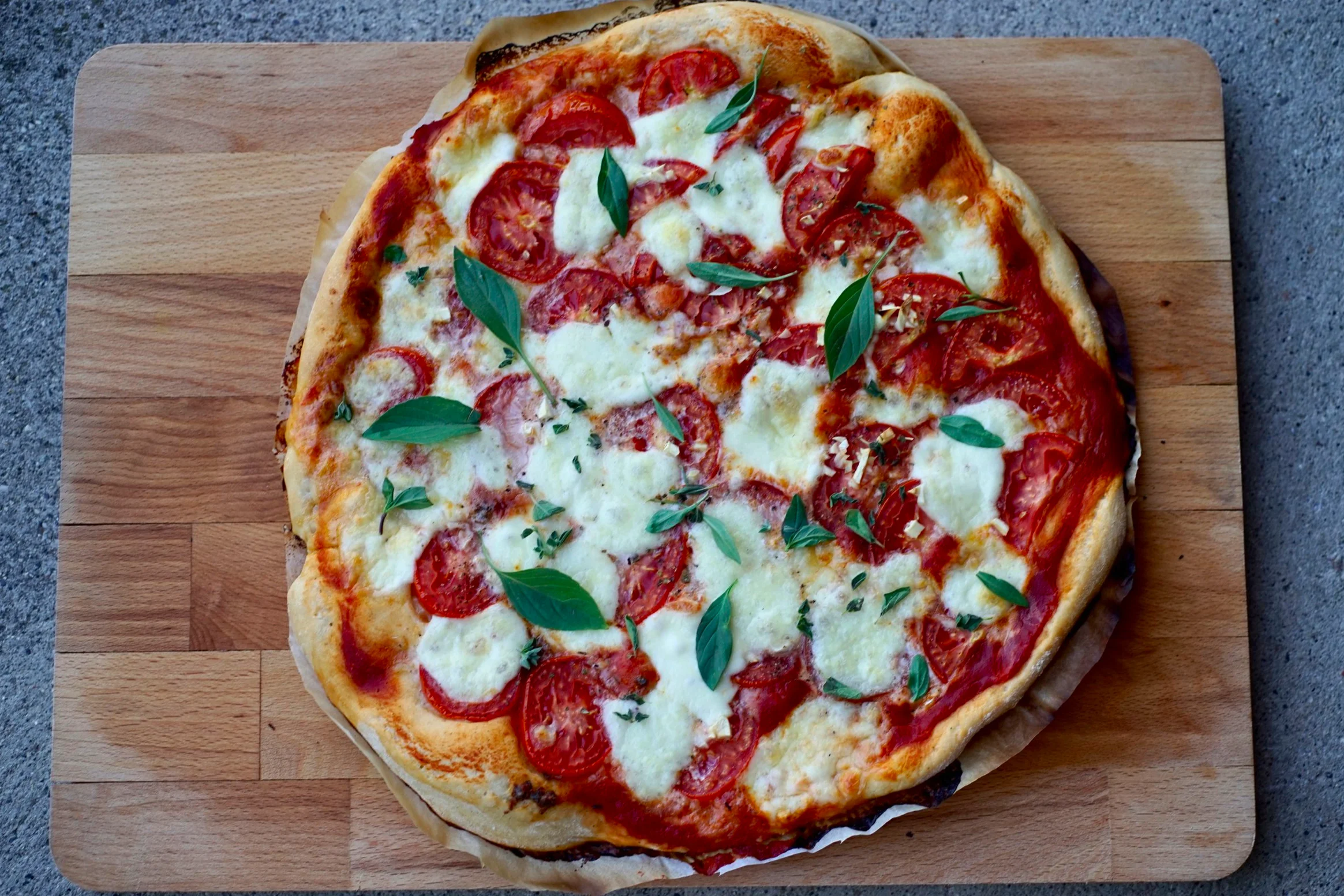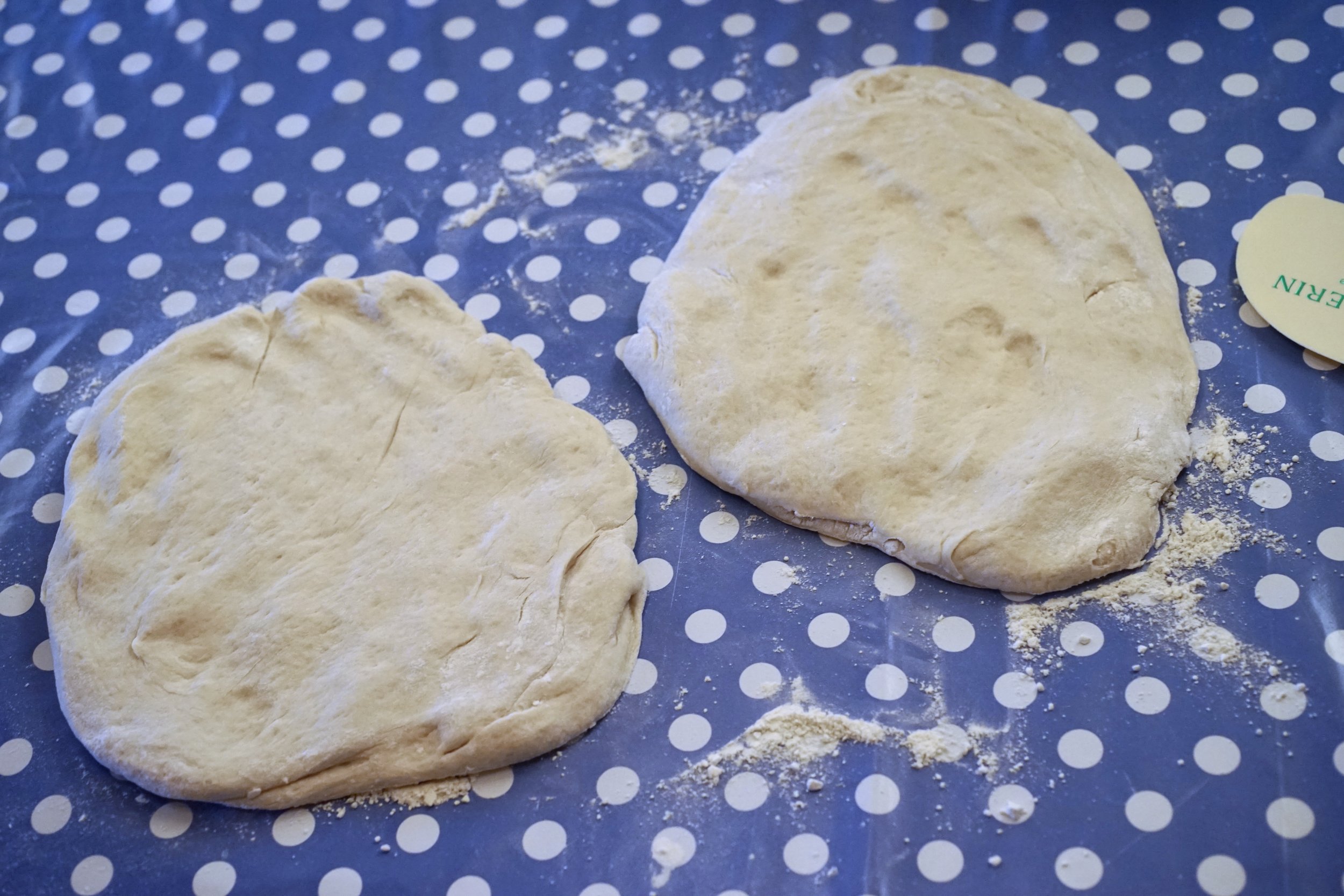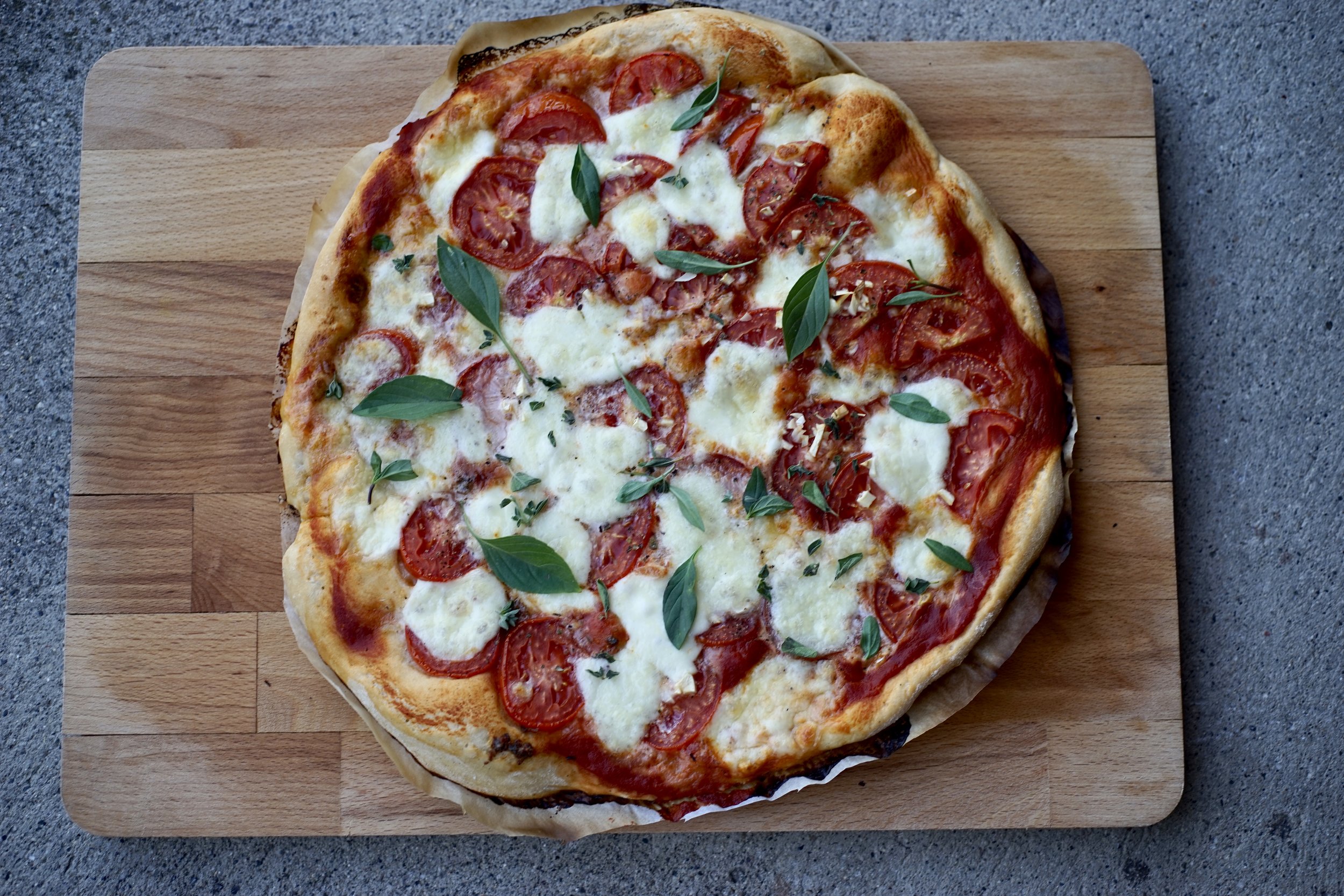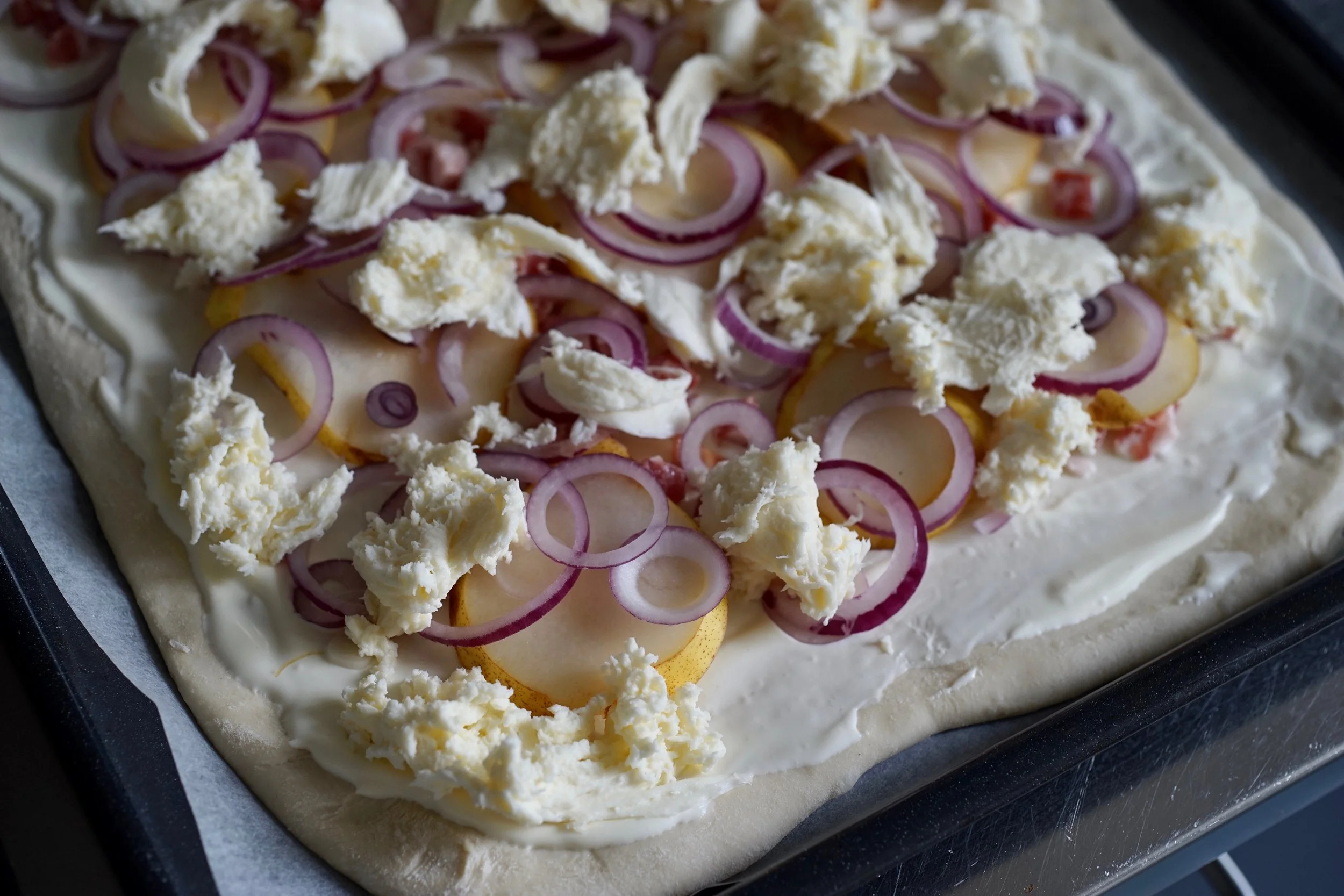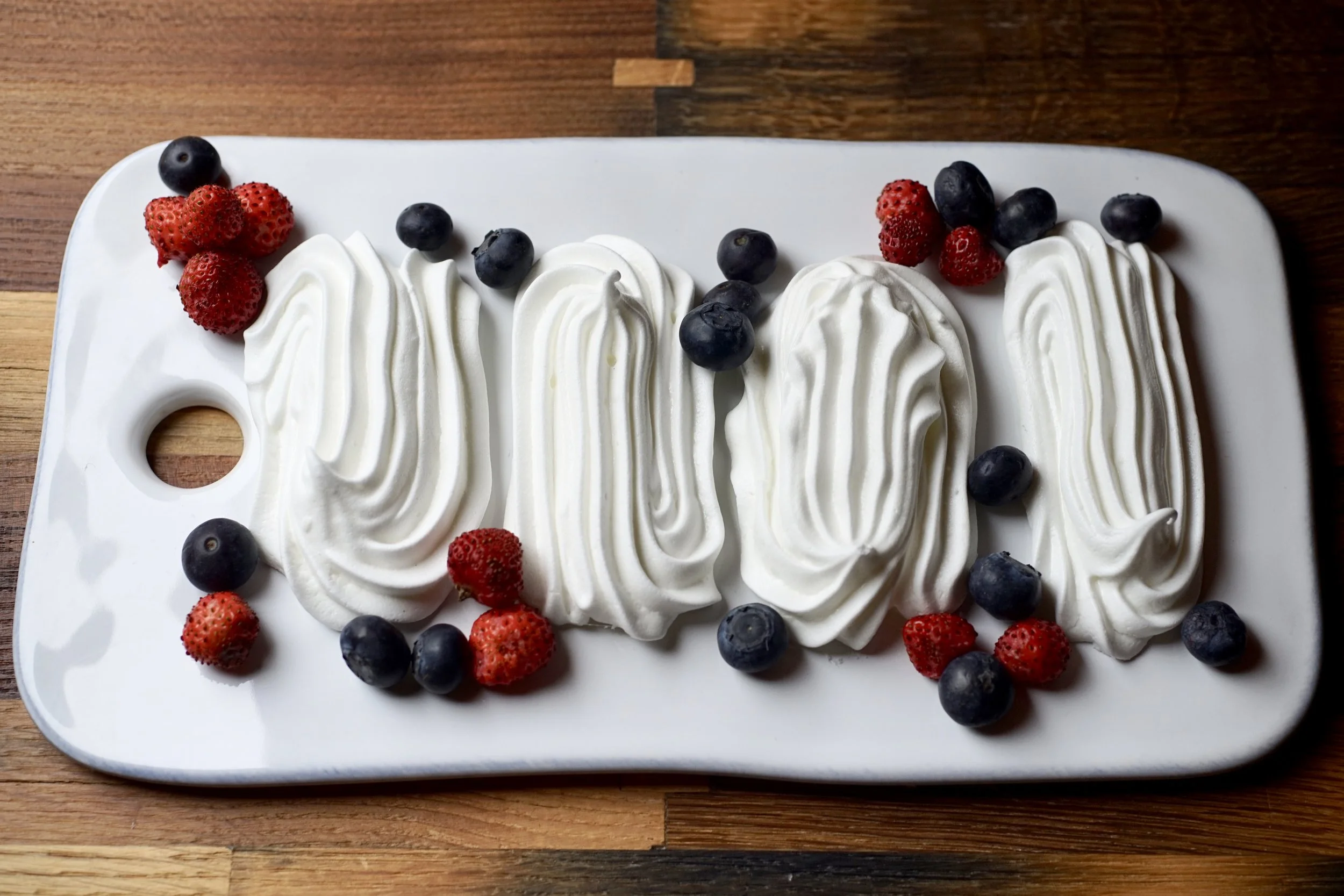UrDinkel Pizza
One of my favourite applications of spelt flour (or any flour for that matter) is pizza dough.
Here’s a little refresher on spelt in Switzerland (borrowed from my post on Dinkel Pop Bars).
In German, spelt is called Dinkel (it's epeautre in French and spelta in Italian) and this ancient grain has been cultivated in Europe since the Late Stone Age.
But after centuries of dominance, spelt production gave way to its heartier cousin, wheat, which required less care and yielded more grain.
Dinkel in Switzerland
Like much of Europe, spelt production decreased in Switzerland throughout the 20th century, and it was only in 1995 that concerned farmers and millers banded together to preserve this unique grain.
They formed UrDinkel (ur- just being a German prefix denoting something old/ancient/indigenous) and established criteria for pure spelt production in Switzerland.
They grow UrDinkel across the street from our house in the Emmental.
What makes UrDinkel?
The spelt must be a pure strain and not crossed with wheat.
It must come from a region that traditionally produced the grain.
It must be organically farmed.
The finished product must contain pretty much no trace of any other grain.
It's actually not possible to fertilize the soil used to grow spelt, otherwise the stalks grow too quickly, buckle, and break in half. That means that the yield is lower, which was one reason the spelt was crossed with wheat in the first place.
Today this protected UrDinkel is grown throughout the country.
You can buy UrDinkel flour in most Swiss supermarkets, both light (hell/clair/chiara) and classic, which contains 20% of the Schrot, or unprocessed grain (what would be used when making whole wheat flour). Both work well in this recipe.
You can roll the dough thick or thin, according to your taste, and I usually double the recipe (pictures above) to feed the whole family, or freeze half for next time.
350 g spelt flour
10 g salt
20 g yeast
200 ml water, warm
2 tbsp olive oil
pizza toppings of choice
In a large bowl, whisk together the flour and salt.
In a measuring cup, whisk together the yeast and water.
Make a well in the middle of the flour and pour in the liquid. Add the olive oil, then mix until you have a dough. Knead for about ten minutes, or until smooth and elastic. Alternatively, use a stand mixer with a dough hook.
Let rise for about 50-60 minutes, or until doubled in size.
Preheat your oven to 230 C / 425 F / gas mark 7.
Once it has risen, form into a large flat disc or rectangle and place on a parchment-lined baking sheet. Let rest briefly, while you prepare your pizza toppings, then roll out.
Top with pizza topping of your choice, then bake until the cheese has melted and the crust is baked through.
I always double the recipe (my family loves pizza) and if I have too much, I simply freeze the dough to use later.
While you’re kneading, if the dough looks a bit too sticky, add a little bit more flour, or if you see big flour patches and it seems too dry, add a tiny bit more water.
I topped my pizza with tomato sauce, fresh tomatoes, chopped garlic, mozzarella, and then garnished with basil once it came off the BBQ.
I baked my pizza on the BBQ. I have attempted it both with a pizza stone, and free form, on the top rack, using thick tin foil and rolling the dough out a bit thicker than usual. It usually takes a less time than in the oven, so keep your eye on it.
More pizza?
Pizza Williams

